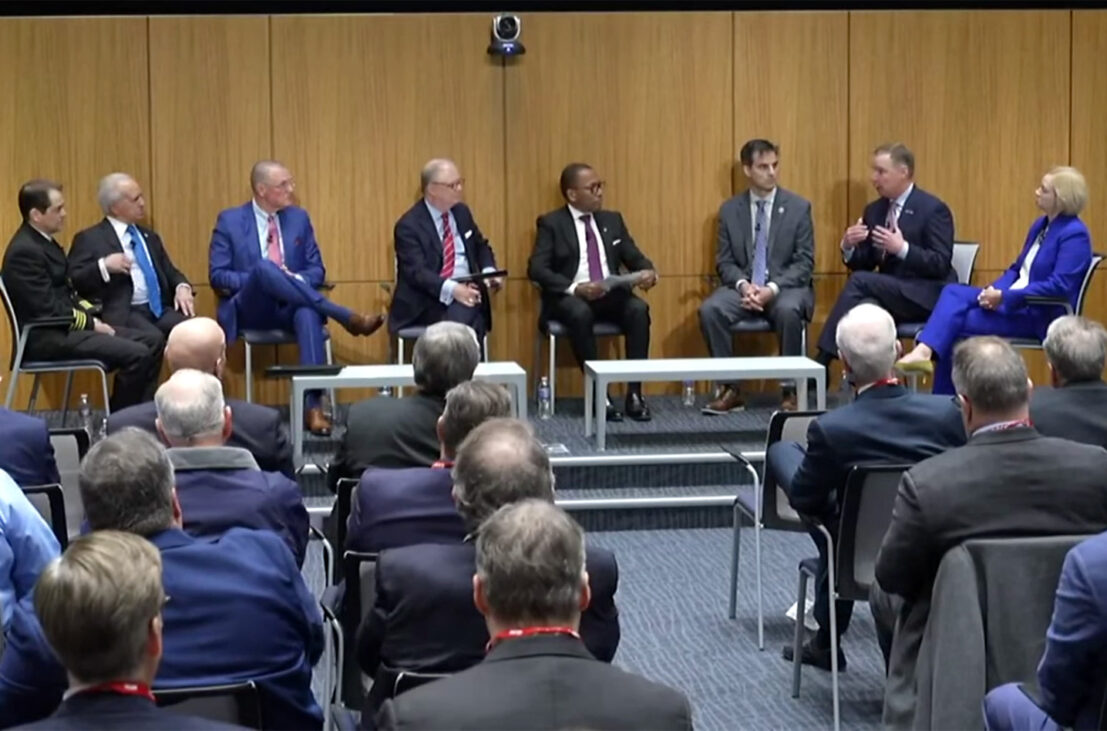
March 15, 2023
At a rare Safety Summit convened by the FAA in Washington, DC on March 15, NBAA President and CEO Ed Bolen emphasized the importance of collaboration, communication and engagement among all stakeholders in ensuring that America continues to set the standard for aviation safety around the world.
FAA Acting Administrator Billy Nolen called the summit following a spate of technical failures, runway incursions and other recent safety incidents that garnered headlines and highlighted the urgency of the agency’s mission to adapt to an ever-evolving national airspace system.
The event began with remarks from Department of Transportation Secretary Pete Buttigieg and National Transportation Safety Board (NTSB) Chair Jennifer Homendy, who then turned to Nolen for his perspectives.
“These events are concerning [and] not what we’ve come to expect during a time of unprecedented safety in the U.S. air transportation system,” Nolen stated. “One of the hallmarks of aviation and the people who pursue a life in this industry is the willingness to question conventional wisdom and to always be looking to advance safety.”
Following his opening remarks, Nolen joined former NTSB Chair Robert Sumwalt in leading a panel discussion with Bolen and other industry leaders.
View a video compilation of Bolen’s summit perspectives.
“Complacency is our enemy and vigilance is our responsibility,” Bolen said. “We have lots of layers of safety and redundancy, and sometimes [they] allow someone to say, ‘I can relax.’ But that’s not who we are.”
As one example, Bolen pointed to the Jan. 11 Notice to Air Missions (NOTAM) outage that grounded most commercial and business aircraft traffic for several hours and brought national attention to the need to upgrade FAA systems.
“With urgency and funding, we can move forward with increased technology,” he continued. “I want to congratulate the FAA on focusing on how we can shorten the timeframe for making the NOTAM system more resilient.”
Bolen also emphasized the importance of the use of Safety Management Systems, or SMS, in bringing a data-based approach to continued safety enhancements, noting that many business aircraft operators have adopted SMS to mitigate risks and inform decision-making.
However, he also underscored the importance of ensuring that any new FAA SMS mandate is scalable to the diversity of operational types across the aviation sector – a concern that has surfaced in light of the agency’s proposed rule requiring Part 135 certificate holders, Part 91.147 air tour operators and certain Part 21 Type Certificate and Production Certificate holders to implement SMS in their operations.
“A saw is a great cutting tool. A scalpel is a great cutting tool. But they’re not interchangeable,” Bolen said. “Getting the rule right and scaling it for the diversity of all operations is really important.”
Following the panel, Bolen and other NBAA representatives participated in the summit’s afternoon breakout sessions on several safety topics related specifically to commercial operations, general aviation operations, the air traffic system and airport and ground operations. Review the readout from the FAA Aviation Safety Summit breakout panels.
“We need to be leaders, and we’re only going to be able to lead if we understand each other and work together on our common goals,” Bolen concluded. “We’ve got to be safe. We’ve got to be perceived to be safe. Collaboration is key.”
Others on the panel included Capt. Jason Ambrosi, president of Air Line Pilots Association, International (ALPA); Airlines for America (A4A) President and CEO Nicholas Calio; Todd Hauptli, president and CEO of American Association of Airport Executives (AAAE); National Air Traffic Controllers Association (NATCA) President Rich Santa and Faye Malarkey Black, president and CEO of Regional Airline Association (RAA).


 International Business Aviation Council Ltd.
International Business Aviation Council Ltd.